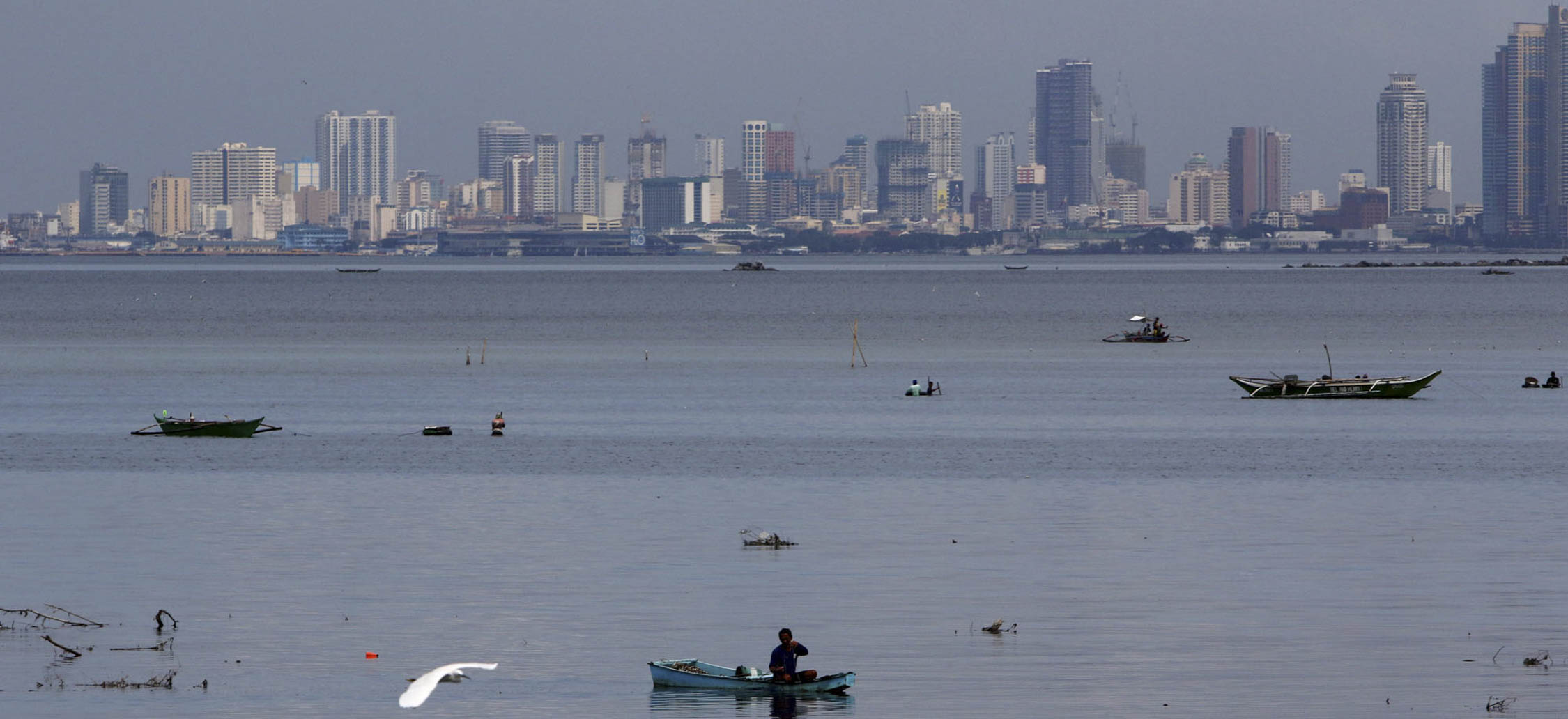Settlers give way to Manila Bay rehab

VIEW FROM CAVITE The Manila skyline is visible from Cavite, one of the provinces whose communities and industries are blamed for polluting Manila Bay. —RICHARD A. REYES
CALAMBA CITY – Environment Secretary Roy Cimatu on Friday said one of the most difficult tasks in rehabilitating Manila Bay involved dealing with thousands of informal settlers around the water body.
Cimatu, in his speech at the inauguration of the Department of Environment and Natural Resources’ (DENR) regional office in Calabarzon (Cavite, Laguna, Batangas, Rizal and Quezon) here, said a big chunk of pollutants comes from household and livestock waste thrown into water tributaries connected to Manila Bay.
Most households along estuaries also do not have septic tanks or are not connected to proper sewage systems, he said.
Simultaneous cleanup
The government’s rehabilitation of the 2,000-square-kilometer Manila Bay kicks off Sunday with a simultaneous coastal cleanup in Metro Manila and Cavite province.
Article continues after this advertisementEnvironment Undersecretary Benny Antiporda, in a separate interview, said the DENR would also begin issuing closure orders to at least four hotels and establishments along Manila Bay found to be violating environmental laws.
Article continues after this advertisementThe government has set aside P47 billion for the program, which it targets to complete by the end of the administration of President Duterte in 2022.
Cimatu said that in Cavite alone, about 12,000 families of informal settlers along the coastline from Bacoor City to Ternate town would have to be relocated.
Cimatu also ordered the suspension of environmental compliance certificates issued to livestock and poultry farms in the provinces of Laguna, Batangas and Rizal found to be contributing to pollution in Manila Bay.
Ruth Unlayao, DENR provincial director in Cavite, said the local government planned to move the families to Naic town, but completing the relocation might take them until the end of the year.
In the meantime, Cimatu suggested the use of bucket containers, a method of collecting human waste in buckets filled with organic material as compost, for households lacking toilets.
“I tell you this will not be an easy task for all of us,” Cimatu said.
Earning Duterte confidence
But he said the DENR had earned the “President’s confidence,” especially after the successful rehabilitation of Boracay, the world-famous resort island that the government shut down for six months.
Coliform level in Manila Bay currently tests as high as 330 million most probable number per 100 milliliters.
The government aims to bring it down to a “compliance level” of at least 100 MPN per 100 ml.
Cimatu said coliform level around Boracay used to be at 1 million MPN per 100 ml before the island’s closure.
“As you can see, the required effort (for Manila Bay) will be about 330 times more,” he added.